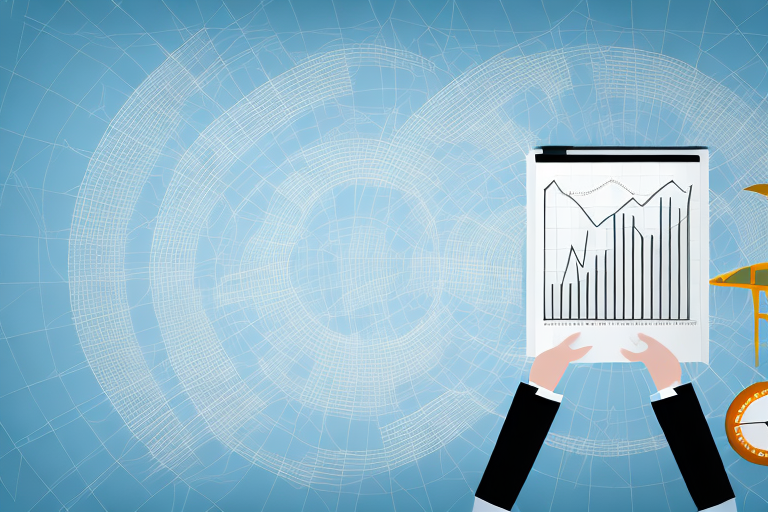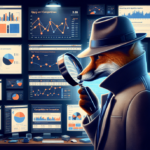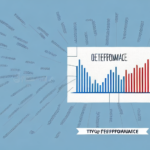Importance of Monitoring Economic Trends
Keeping an eye on economic trends is essential for businesses that aim to stay competitive and profitable in today's fast-paced marketplace. By tracking economic indicators, businesses can adjust their strategies to stay ahead of competitors, identify potential challenges, and make informed decisions that foster growth and success.
Staying Competitive
Monitoring economic trends allows businesses to understand the broader economic landscape, enabling them to make data-driven decisions. For instance, recognizing a trend of decreasing consumer spending can prompt businesses to adjust their marketing or pricing strategies to maintain competitiveness. Conversely, identifying an upward trend in a particular industry can present opportunities for expansion and growth.
Risk Management
By keeping an eye on economic indicators such as inflation rates, interest rates, and unemployment rates, businesses can anticipate potential economic downturns and adjust their strategies accordingly. For example, anticipating a recession might lead a business to cut costs, reduce workforce size, or diversify product offerings to mitigate risks.
Innovation and Market Positioning
Analyzing market trends and consumer behavior helps businesses identify gaps in the market, leading to the development of innovative products or services. For example, a growing trend towards eco-friendly products can encourage businesses to invest in sustainable materials and production methods, thereby differentiating themselves from competitors and appealing to environmentally conscious consumers.
Key Economic Indicators to Track
Several key economic indicators provide insights into the health of the economy. Businesses should monitor the following indicators to stay informed:
- Gross Domestic Product (GDP): Measures the overall economic output and growth.
- Unemployment Rate: Indicates the percentage of the workforce that is unemployed and actively seeking employment.
- Inflation Rate: Reflects the rate at which the general level of prices for goods and services is rising.
- Consumer Spending: Represents the total expenditure by households on goods and services.
- Business Investment: Measures the amount businesses are investing in capital goods.
- Personal Income: Indicates the total income received by individuals.
- Industrial Production: Measures the output of the industrial sector, including manufacturing, mining, and utilities.
- Trade Balance: The difference between a country's exports and imports.
Tracking these indicators provides businesses with a comprehensive view of economic performance and helps determine whether conditions are favorable for growth.
It's important to note that external factors such as government policies, natural disasters, and global events can influence these indicators. For example, changes in trade policies can impact the trade balance, while a natural disaster can affect industrial production. Therefore, businesses should also monitor these external factors and adjust their strategies accordingly.
Analyzing and Interpreting Economic Data
Benchmarking and Trend Analysis
Interpreting economic data involves benchmarking against industry standards and comparing trends over time. Benchmarking helps businesses understand how they perform relative to peers, while trend analysis identifies patterns that can inform strategic decisions.
Contextual Analysis
Economic data should be analyzed in the context of current events and market conditions. For example, a sudden increase in unemployment rates may require examining the affected industries and underlying causes. Additionally, considering the impact of external factors such as government policy changes or global economic shifts is crucial for accurate interpretation.
Utilizing Reliable Resources
Businesses can leverage reports and analyses from reputable sources such as Bureau of Labor Statistics (BLS) and Bureau of Economic Analysis (BEA) to understand economic data and its implications. These authoritative sources provide comprehensive data and insights that facilitate informed decision-making.
Tools and Resources for Tracking Economic Trends
There are numerous tools available to help businesses track and analyze economic trends:
- Online Analytics Tools: Platforms like Google Analytics provide valuable insights into consumer behavior and website performance.
- Economic Research Reports: Government agencies and research firms, such as the Federal Reserve, offer detailed economic analyses and forecasts.
- Economic News Publications: Sources like The Wall Street Journal and Bloomberg provide up-to-date news on economic developments.
- Market Intelligence Platforms: Tools like TradingView and Ycharts offer robust data visualization and analysis capabilities.
Businesses should select tools that align with their specific industry needs and consider factors such as cost and accessibility when making a choice.
Impact of External Factors on the Economy
Global Events
Events such as pandemics, political instability, and natural disasters can significantly influence the economy. During the COVID-19 pandemic, for example, consumer spending decreased, and supply chains were disrupted, forcing businesses to adapt their strategies.
Government Policies
Government policies, including tax regulations, interest rates, and trade agreements, play a crucial role in shaping economic trends. Policy changes can affect business operations, investment decisions, and overall economic growth.
Technological Advancements
Technological innovations can create new opportunities and disrupt existing markets. Businesses that stay informed about technological trends can leverage them to enhance operations and stay competitive.
Incorporating Economic Trends into Business Strategy
To effectively integrate economic trends into business strategy, companies should:
- Regular Analysis: Continuously track and analyze relevant economic indicators to stay informed about market conditions.
- Strategic Adjustments: Use insights from economic data to adjust marketing, pricing, and investment strategies proactively.
- Scenario Planning: Develop multiple scenarios based on different economic conditions to prepare for various outcomes.
- Innovation: Identify and capitalize on emerging trends to develop new products or services that meet evolving customer needs.
Case Studies of Successful Businesses
Many successful businesses exemplify the effective use of economic trend monitoring:
- Amazon: Amazon tracks consumer spending trends to adjust product offerings and pricing strategies, ensuring they meet customer demand.
- Procter & Gamble: P&G analyzes economic data to make informed pricing and marketing decisions, maintaining their market leadership.
- Walmart: Walmart uses economic data to determine product stocking and pricing, ensuring competitive pricing and product availability.
- Airlines: The airline industry monitors economic trends to make strategic decisions about pricing, route offerings, and promotions based on demand forecasts.
Common Mistakes to Avoid When Analyzing Economic Data
When analyzing economic data, it is crucial to avoid common pitfalls that can lead to inaccurate conclusions:
- Using Outdated Data: Relying on old data can result in decisions that do not reflect current economic conditions.
- Misinterpreting Data: Misinterpretations due to sample size or selection bias can lead to flawed conclusions.
- Ignoring External Events: Failing to account for external factors like pandemics or policy changes can skew data analysis.
- Lack of Contextual Understanding: Not considering the broader context in which data is collected can result in incomplete analysis.
Ensuring data is current, accurately interpreted, and contextualized is essential for effective economic analysis.
Best Practices for Using Economic Data to Drive Business Decisions
To maximize the benefits of economic data, businesses should adopt the following best practices:
- Regular Monitoring: Consistently track and analyze economic indicators relevant to your industry.
- Diverse Data Sources: Use multiple data sources and cross-check information to ensure accuracy and reliability.
- Deep Analysis: Beyond surface-level numbers, understand the underlying trends and drivers influencing the data.
- Proactive Strategy Adjustment: Implement changes based on data insights proactively rather than waiting for trends to fully develop.
Future Outlook: Emerging Economic Trends to Watch
The economic landscape is constantly evolving, with several emerging trends set to shape the future:
- Rise of Remote Work and E-commerce: The shift towards remote work and online shopping continues to transform industries and consumer behavior.
- Growth of Emerging Markets: Countries like China and India are experiencing significant economic growth, offering new opportunities for businesses.
- Impact of Climate Change: Climate change is affecting global supply chains and prompting businesses to adopt more sustainable practices.
By monitoring these emerging trends, businesses can stay informed and adapt their strategies to maintain a competitive edge in a rapidly changing economy.






















